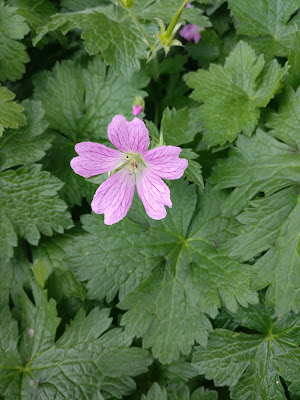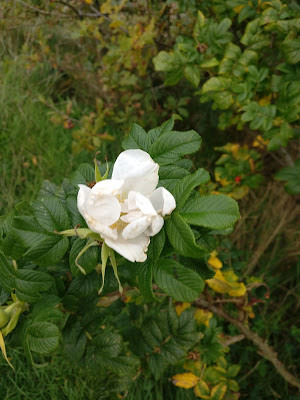This blog may help people explore some of the 'hidden' issues involved in certain media treatments of environmental and scientific issues. Using personal digital images, it's also intended to emphasise seasonal (and other) changes in natural history of the Swansea (South Wales) area. The material should help participants in field-based modules and people generally interested in the natural world. The views are wholly those of the author.
Saturday, 1 October 2022
Seeing the Changes 1709
Did a 6 k circuit from Loughor to Gorseinon and back. More flowers still evident. Noted Red clover (Trifolium pratense); White clover (Trifolium repens); Butterfly bush (Buddleja davidii); Field rose (Rosa arvense); Honeysuckle (Lonicera periclymenum); Orange hawkweed (Hieracium auranticum); French cranesbill (Geranium endressii); Marsh willowherb (Epilobium palustre); Bramble (Rosa fructicosus); Japanese knotweed (Reynoutria japonica); Ragwort (Senecio jacobaea); Dovesfoot cranesbill (Geranium molle); Wild raddish (Raphanus raphanistrum); Saw wort (Serratula tinctoria) and Herb Robert (Geranium robertianum). There were also items in fruit including alien Snowberry (Symphoricarpos albus); Sea buckthorn (Hippophae rhamnoides); Pedunculate oak (Quercus robur) and Sweet chestnut (Castanea sativa). A Red admiral butterfly (Vanessa atalanta) sunned itself on Bracken.
Subscribe to:
Post Comments (Atom)
-
I n the UK and US, a pparently popular and successful vegan/vegetarian restaurants are reportedly closing or adding meat to their menus ( ...
-
Early ripening fruit may seem convenient but some folk think it confirms environmental stress. There's also a possibility th...





















%20mating%20NWCW.jpg)


No comments:
Post a Comment